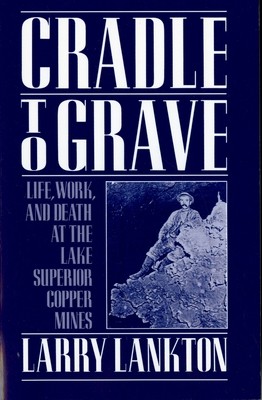
- We will send in 10–14 business days.
- Author: Larry Lankton
- Publisher: Oxford University Press, USA
- ISBN-10: 0195083571
- ISBN-13: 9780195083576
- Format: 15.9 x 23.6 x 1.8 cm, softcover
- Language: English
- SAVE -10% with code: EXTRA
Reviews
Description
Concentrating on technology, economics, labor, and social history, Cradle to Grave documents the full life cycle of one of America's great mineral ranges from the 1840s to the 1960s. Lankton examines the workers' world underground, but is equally concerned with the mining communities on the surface. For the first fifty years of development, these mining communities remained remarkably harmonious, even while new, large companies obliterated traditional forms of organization and work within the industry. By 1890, however, the Lake Superior copper industry of upper Michigan started facing many challenges, including strong economic competition and a declining profit margin; growing worker dissatisfaction with both living and working conditions; and erosion of the companies' hegemony in a district they once controlled. Lankton traces technological changes within the mines and provides a thorough investigation of mine accidents and safety. He then focuses on social and labor history,
dealing especially with the issue of how company paternalism exerted social control over the work force. A social history of technology, Cradle to Grave will appeal to labor, social and business historians.
EXTRA 10 % discount with code: EXTRA
The promotion ends in 18d.08:23:59
The discount code is valid when purchasing from 10 €. Discounts do not stack.
- Author: Larry Lankton
- Publisher: Oxford University Press, USA
- ISBN-10: 0195083571
- ISBN-13: 9780195083576
- Format: 15.9 x 23.6 x 1.8 cm, softcover
- Language: English English
Concentrating on technology, economics, labor, and social history, Cradle to Grave documents the full life cycle of one of America's great mineral ranges from the 1840s to the 1960s. Lankton examines the workers' world underground, but is equally concerned with the mining communities on the surface. For the first fifty years of development, these mining communities remained remarkably harmonious, even while new, large companies obliterated traditional forms of organization and work within the industry. By 1890, however, the Lake Superior copper industry of upper Michigan started facing many challenges, including strong economic competition and a declining profit margin; growing worker dissatisfaction with both living and working conditions; and erosion of the companies' hegemony in a district they once controlled. Lankton traces technological changes within the mines and provides a thorough investigation of mine accidents and safety. He then focuses on social and labor history,
dealing especially with the issue of how company paternalism exerted social control over the work force. A social history of technology, Cradle to Grave will appeal to labor, social and business historians.


Reviews